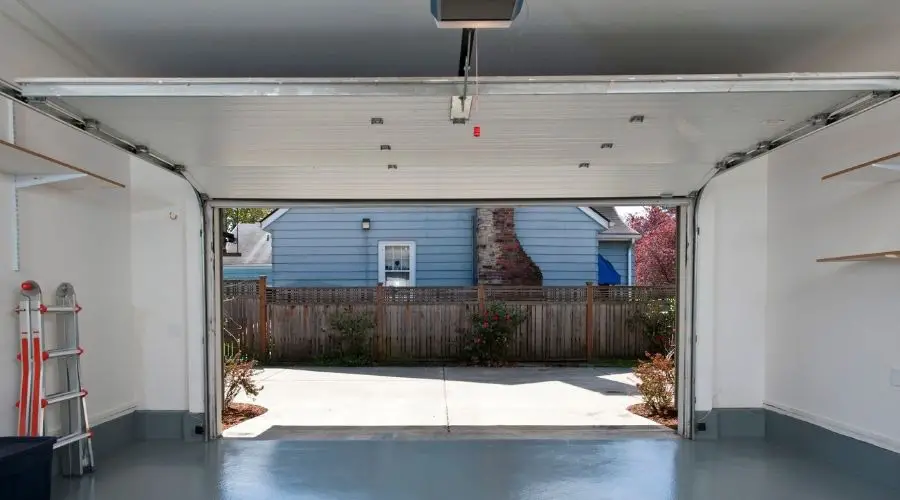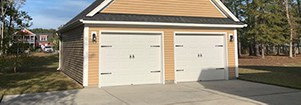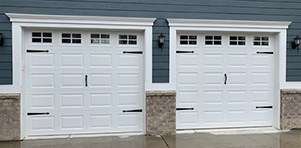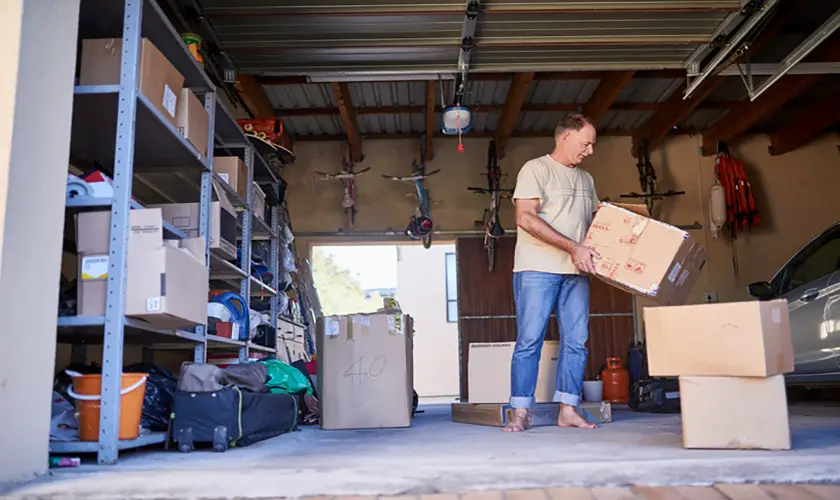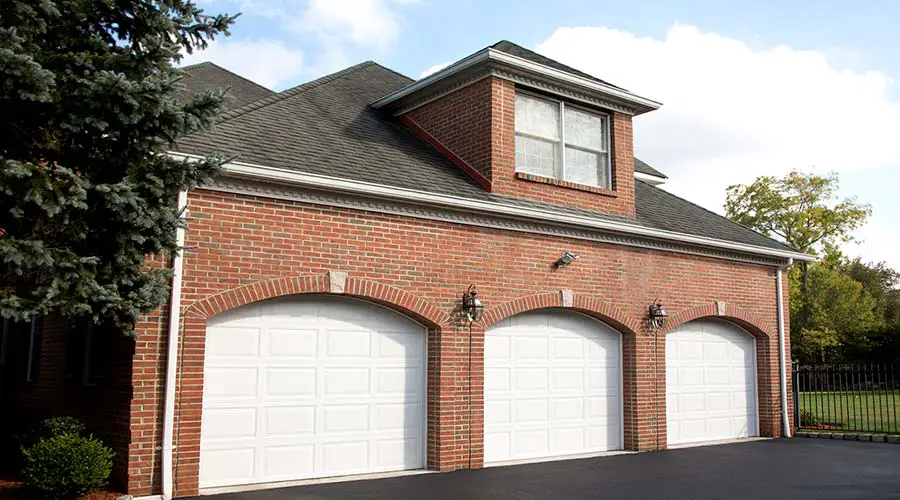
Most homeowners want to have a garage attached or detached from their home. It helps keep the cars safe from the elements.
Garages also provide more shelter when needed, such as if you have an outdoor party and it starts raining. Your guests will have a dry place to go in the meantime until it stops.
Given that information, what is a good garage size?
You will ultimately know what a decent garage size is by what you need to store. However, an average residential garage size ranges from 1 to 3 cars.
The measuring of these garages is roughly 12’x22′ (12 feet wide to 22 feet deep) for one car garage and 32’x22′ (32 feet wide by 22 feet deep) for a three-car garage.
This article will dive into what a good garage size is and what considerations need to consider before investing in the right choice for you. Continue reading on for more.
What is a Good Garage Size?
A good garage size to have fits what your needs are. However, we have found out the average measurements for 1, 2, 3, and 4-car garages.
Check out the chart we used below for a reference:
| Size | Width (ft.) | Depth (ft.) | Door width (ft.) | Area (sq. ft.) |
|---|---|---|---|---|
| 1-car garage | 12′ to 16′ | 20′ to 24′ | 8′ to 10′ | 240 to 384 |
| 2-car garage | 18′ to 22′ | 20′ to 22′ | 8′ to 16′ | 440 to 624 |
| 3-car garage | 32′ to 40′ | 20′ to 30′ | 8′ to 16′ | 620 to 816 |
| 4-car garage | 40′ to 44′ | 20′ to 24′ | 8′ to 16′ | 800 to 1056 |
You can easily say you want a specific garage and be done with it altogether, but it is wise to consider certain factors first. Let us go over them down below:
1. How Many Cars Your Household Has
If you have multiple cars living under one roof, you might want to keep them tucked away from the elements as long as you can, especially during a thunderstorm or when it hails, if you get any.
You will want the garage size to accommodate those needs. However, if you live on a smaller lot, it is wise to keep that limitation in mind before going big with, say, a four-car garage.
2. What Hobbies Must You Accommodate
A Work-at-Home Space
Suppose you have a small local business that allows you to work from home, or more specifically, inside the garage. In that case, you will need somewhere to go to work on what you are selling. Not only that, but it must be large enough to fit your needs.
Adding a garage means that you don’t have to worry about building, renting, or purchasing any other workspace near your home either.
An Added Recreation Space
Another case is if you have a hobby you enjoy, such as playing a particular instrument. It might not be very pleasing to others in your home to hear once they get home from school or work. However, having a specific space in the garage is an excellent remedy to that solution.
Garage size is an important consideration when planning your home gym. You’ll want to make sure you have enough space to move around and that the equipment you choose will fit in the garage. If you’re limited on space, consider choosing smaller pieces of equipment or using exercises that don’t require any equipment.
Storing Recreation Vehicles
When it comes to garage size, bigger is better. If you have the extra space, go for a garage that’s at least two or three times the size of your car. That will give you plenty of room to store golf carts, ATVs, and other recreational vehicles. Plus, it will be easier to work on projects in a larger space.
3. Needing Storage Space
If your home builds up over time due to living there relatively long, then a garage is good to use as extra space for storage. Another case scenario is that you can easily place your lawn equipment there.
4. You Use the Garage for Extra Living Space
Do you have teenagers who wish they had their own space within your home, or do you want more living room overall? The garage will make an excellent exception to that idea.
However, if you want to provide both a living space and storage area, it might be wiser to make the size a bit bigger than a typical 1-car garage.
5. Throwing a Party
If you like to have parties but do not have the space inside your home to have many guests, then accommodating a relatively large garage area is an excellent choice. The larger the garage, the more people you can invite over.
Do You Want an Attached or Detached Garage?
One of the many things homeowners might ask themselves is if the garage should be attached or detached from a building.
You want to consider where the garage will be, what the height is, and if it will make your home less aesthetically pleasing than if it were detached from the house altogether. However, attaching it to your home is better if you want more access to the garage.
Another thing to consider is if you want privacy or not. Keeping the garage detached from the building you live in is better for those with small businesses who do not wish to be disturbed much.
Average Garage Sizes
Since you have considered everything above, it is time for you to choose which garage size fits your style and needs more.

Average Size of a One-Car Garage
If you have a one-car garage, then you might already know that it is the smallest option you can get. Single car garages are typically the size of a small bedroom but large enough to place your car inside. There’s little if any extra space for storage.
It is a little hard to think your car can fit inside a bedroom in your home, but it is possible just as a garage instead!
1-Car Garage Dimensions
On average, a one-car garage is 12 feet wide and 22 feet deep. However, you can choose other options that fit better if you prefer. Some of these examples of single car garage dimensions are as follows:
- 14’x22′ (14 feet wide by 22 feet deep)
- 14’x24′ (14 feet wide by 24 feet deep)
- 16’x24′ (16 feet wide by 24 feet deep)
As you can see, the bigger the size you get, the more storage or extra space you can have within the vicinity of the area while storing a truck that is roughly 19.8 feet tall in there with no issues.

Average Size of a Two-Car Garage
If your household has two cars, then you may want to consider adding a two-car garage to your property just because of the advantages you gain from doing so.
However, even if that is not the case and you wish to use that extra space for any outdoor equipment you may have, then it is the perfect space to do so.
2-Car Garage Dimensions
Keeping that in mind, two-car garages are 18’x20′ (18 feet wide by 20 feet deep). According to VEHQ, the average size of a car is 5.8 to 6.6 feet wide, so that would leave roughly 4.8 feet of wiggle room to work with if you decide to place two cars in there.
On the contrary, there are other options you can go for if you wish to have more comfortable wiggle room to open doors to your cars. Some examples of these options are:
- 20’x20′ (20 feet wide by 20 feet deep)
- 20’x22′ (20 feet wide by 22 feet deep)
- 22’x22′ (22 feet wide by 22 feet deep)
When it comes to garages, size matters. If you have a two-car garage, you’ll need to decide if you want two single doors or one double door.
Having two single doors can be more convenient, but separate doors can have higher initial costs and long-term maintenance costs than a double garage door. With two separate doors, you’ll have the cost of the doors, tracks, spring systems, and garage door openers times two.
Many opt for a double door because while the garage door is larger and more expensive, you only have one installation to maintain. Double doors also allow you to get both cars in and out of the garage more easily.
Whichever option you choose, make sure that your garage is big enough to fit both cars comfortably.
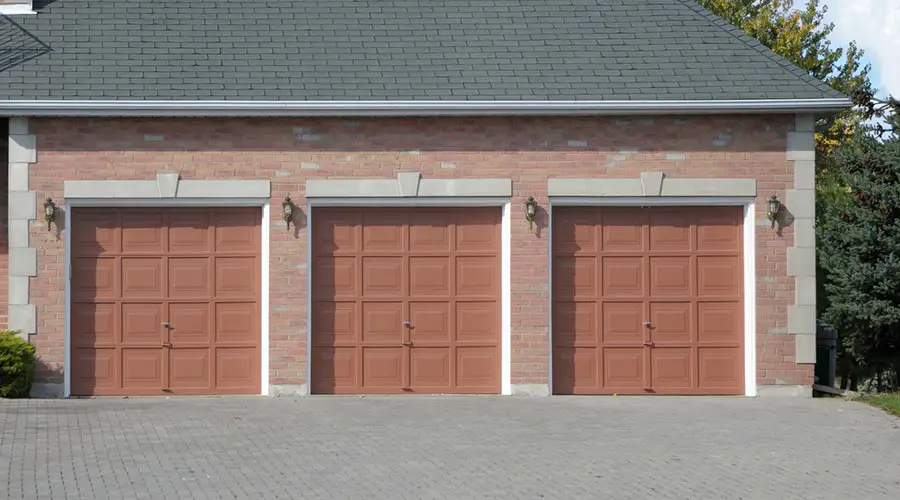
Average Size of a Three-Car Garage
If you are a family that has older children who drive, then a three-car garage might be your best bet.
On the other hand, having this oversized garage also means you can use the extra space for an additional family room. Overall, you can have many uses for this space.
3-Car Garage Dimensions
So, what is the average size of a three-car garage? They are relatively large, at 32’x22′ (32 feet wide by 22 feet deep), making three cars fit very snug inside. Keep in mind that other options are available too.
- 28’x26′ (28 feet wide by 26 feet deep)
- 36’x25′ (36 feet wide by 25 feet deep)
- 40’x30′ (40 feet wide by 30 feet deep)
Seeing how the ceiling height is much more significant than the other two, you can guarantee your truck will fit much better in that space.
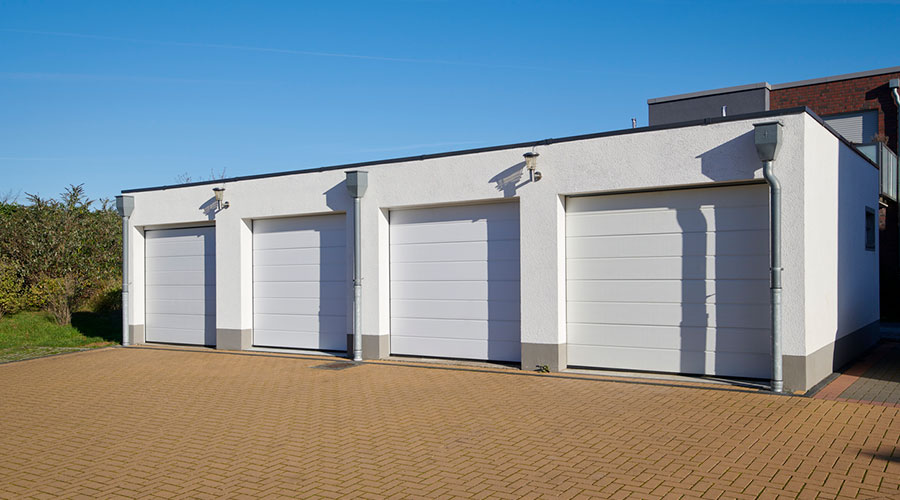
Average Size of a Four-Car Garage
Lastly, we have a four-car garage. This relatively large garage typically gets built with a luxurious home.
Suppose you only have three cars that you actively drive but would up finding yourself a 1965 Ford Mustang (if you like cars, that is.)
In that case, you’re going to want to take good care of it and leave it where it is stored away from the elements. You can take it out on a shiny and sunny day.
You can customize a four-car garage, but the dimensions usually are between 34 to 36 feet wide by 20 to 24 feet deep.
What is the Best Garage Height & Depth for You?
There is a lot to choose from when picking out the garage height and depth, but which one is for you?
There are quite a few factors to come into play, but the central part is that you will want to find out what type of car you drive.
For example, if your family loves driving Jeeps and wish to remain with that brand for the rest of your life, then it would be wise to choose the garage size from that.
Yet, you would not need much space if you like driving compact cars, such as a Mini Hatch.

Cars
1. Compact Cars
Having a compact car is relatively convenient for many reasons, and one of those is having a small garage, especially if you do not have a lot of land to build on.
Cars such as a Ford EcoSport, Chevy Cruze, or a Chevrolet Spark are relatively small and do not need much space. These cars range between 14-15 feet in length and have a width of no more than 6 feet and a height of 5 feet.
2. Medium-sized Cars
Getting into a bit more significant of the spectrum are medium-sized cars. Vehicles such as the Hyundai Sonata, Volvo V60, and Honda Accord are all examples of mid-sized vehicles.
They are a bit larger than a compact car, making them roughly 15 to 16 feet long. The width of this car is 6 feet long with a height of 5 feet.
3. Full-sized Cars
A Nissan Maxima, Chrysler 300, and Dodge Charger are lovely examples of what a full-sized car is.
Full-sized cars are more significant, ranging from 16 to 17 feet long and slightly wider than those mentioned above at 6 feet in width. The height of these cars remains at 5 feet.

Trucks
1. Mid-sized Trucks
If you have a mid-sized truck, you are looking at a 17 to 18-feet wall with a width of 6 to 7 feet. The height is between 6 to 6.5 feet tall.
If you have a mid-sized truck, you want to work with the understanding that you’re going for a 20-feet deep garage at this point.
Some good examples of a mid-sized truck are a Ford Ranger, Toyota Tacoma, and a Nissan Frontier.
2. Full-sized Trucks
Having a full-sized truck is extremely friendly because you can do many fun things with it at this point. A full-sized truck is a Toyota Tundra, Ford F-150, and a RAM 1500.
These vehicles are a bit harder to fit in a regular car garage, so you want to have ample space to fit them in.
These trucks come at around 20 feet in length, which means your garage needs to be long enough to accommodate that. A giant truck can also be about 6 to 7 feet wide and a height of 6 to 6.5 feet.

SUVs
1. Crossover SUVs
A crossover SUV has a length of 15 to 15.5 feet and a width of about 6 feet. The size is between a truck and a car by 5.5 feet.
A couple of examples of a crossover SUV are a Nissan Rogue, Mazda CX-5, and Kia Sorento.
2. Mid-sized SUVs
Examples of mid-sized SUVs are the Kia Telluride, Ford Explorer, and a Dodge Durango, trendy choices.
These vehicles have a height and width of 6 feet, while the length is between 16 to 16.5 feet. It is a tad bit taller than a crossover SUV but not as big as a full-sized SUV, which brings us to our next subject.
3. Full-sized SUV’s
If you have a full-size SUV such as Ford Expedition, Chevy Suburban, or Cadillac Escalade, then you’ll need a garage space capable of housing larger vehicles.
These vehicles are excellent with larger families since they seat a relatively decent amount of people in them.
Like a full-sized truck, it can be rather challenging to have wiggle room, so make sure to have a garage that provides enough space for those needs.
A full-sized SUV is roughly 7-feet wide and 6.6 feet tall, so you do not need to worry about the height of the garage in itself.
Other Considerations to Take into Account
Before we finish the article in itself, you should consider a few other things first.
Dimensions of a Garage Door
There are a few garage door sizes to consider, but the most common is 8 feet wide by 7 feet tall for a one-car garage.
However, if you’re looking at getting a more oversized garage, then consider that as well. Although there are several sizes to choose from, a standard size garage door is 16-feet wide and 7-feet for a two-car single-door garage.
Make sure to measure the openings to find out what size you need. If you are building a garage yourself, choose the largest size that fits.
Zone Regulations on Garages
Does your area have specific zone regulations for garages? In that case, you will need to consider this first before anything. Zoning tells you if the city permits you to build, and in most cases, you will need a signed consent.
Conclusion
In hindsight, how you size a garage entirely depends on your needs and what kind of cars you wish to have. Taking everything into consideration will provide you with the most success in the future!
Sources



